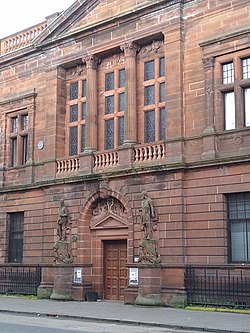
The River Clyde is a river that flows into the Firth of Clyde in Scotland. It is the ninth-longest river in the United Kingdom, and the second-longest in Scotland. It runs through the major city of Glasgow. Historically, it was important to the British Empire because of its role in shipbuilding and trade. To the Romans, it was Clota, and in the early medieval Cumbric language, it was known as Clud or Clut. It was central to the Kingdom of Strathclyde.
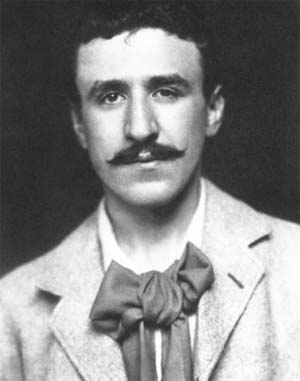
Charles Rennie Mackintosh was a Scottish architect, designer, water colourist and artist. His artistic approach had much in common with European Symbolism. His work, alongside that of his wife Margaret Macdonald, was influential on European design movements such as Art Nouveau and Secessionism and praised by great modernists such as Josef Hoffmann. Mackintosh was born in Glasgow and died in London. He is among the most important figures of Modern Style.
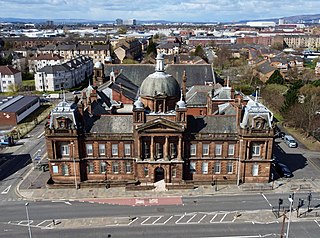
Govan is a district, parish, and former burgh now part of south-west Glasgow, Scotland. It is situated 2+1⁄2 miles west of Glasgow city centre, on the south bank of the River Clyde, opposite the mouth of the River Kelvin and the district of Partick. Historically it was part of the County of Lanark.
Upper Clyde Shipbuilders (UCS) was a Scottish shipbuilding consortium, created in 1968 as a result of the amalgamation of five major shipbuilders of the River Clyde. It entered liquidation, with much controversy, in 1971. That led to a "work-in" campaign at the company's shipyards, involving shop stewards Jimmy Airlie and Jimmy Reid, among others.

The Fairfield Shipbuilding and Engineering Company, Limited was a Scottish shipbuilding company in the Govan area on the Clyde in Glasgow. Fairfields, as it is often known, was a major warship builder, turning out many vessels for the Royal Navy and other navies through the First World War and the Second World War. It also built many transatlantic liners, including record-breaking ships for the Cunard Line and Canadian Pacific, such as the Blue Riband-winning sisters RMS Campania and RMS Lucania. At the other end of the scale, Fairfields built fast cross-channel mail steamers and ferries for locations around the world. These included ships for the Bosporus crossing in Istanbul and some of the early ships used by Thomas Cook for developing tourism on the River Nile.

Govan Shipbuilders Ltd (GSL) was a British shipbuilding company based on the River Clyde at Glasgow in Scotland. It operated the former Fairfield Shipyard and took its name from the Govan area in which it was located.

John Brown and Company of Clydebank was a Scottish marine engineering and shipbuilding firm. It built many notable and world-famous ships including RMS Lusitania, RMS Aquitania, HMS Hood, HMS Repulse, RMS Queen Mary, RMS Queen Elizabeth and Queen Elizabeth 2.

Queen's Cross Church is a former Church of Scotland parish church in Glasgow, Scotland. It is the only church designed by Charles Rennie Mackintosh to have been built; hence, it is also known as The Mackintosh Church.

Robert Napier was a Scottish marine engineer known for his contributions to Clyde shipbuilding.
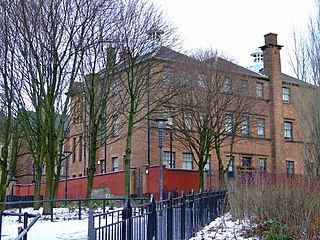
The Martyrs’ Public School, in Parson Street in the Townhead area of Glasgow, Scotland, is one of the earlier works of architect Charles Rennie Mackintosh. Until recently, an arts centre run by Glasgow Museums, it is now home to Glasgow City Council's Social Work Leaving Care Services. It is protected as a category A listed building. Stranded above the main road it was once set in the middle of a densely populated area of tenement buildings. It was built following the Education (Scotland) Act 1872 which provided for increased public expenditure on education. Commissioned by the School Board of Glasgow and built between 1895 and 1898, the architects were Honeyman and Keppie.
Kvaerner Govan Ltd (KGL), located at Govan in Glasgow on the River Clyde, was a shipyard subsidiary formed in 1988 when the Norwegian group Kværner Industrier purchased the Govan Shipbuilders division of the nationalised British Shipbuilders corporation. Prior to the Govan Shipyard's nationalisation in 1977, as a result of the Aircraft and Shipbuilding Industries Act, it had been operated by Govan Shipbuilders Ltd, which emerged from the collapse of the previous Upper Clyde Shipbuilders (UCS) joint venture in 1972. Prior to the formation of UCS in 1968, the Shipyard was operated by the Fairfield Shipbuilding and Engineering Company, which had a history extending back to 1834.
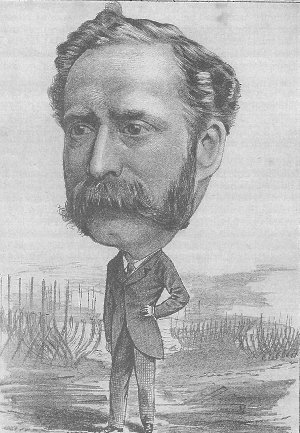
Sir William Pearce, 1st Baronet was a British shipbuilder, under whose management the Fairfield Shipbuilding and Engineering Company in Govan on the River Clyde became the leading shipbuilding company in the world. He was later a Conservative Party politician.
London and Glasgow Shipbuilding Company, also known as the London and Glasgow Engineering and Iron Shipbuilding Company, was a shipbuilding firm established in 1864 by a consortium of London bankers, including the Glasgow engineer James Rodger. They acquired the Middleton Yard in Govan in 1864, and soon acquired more land at Ron Bank in Govan which belonged to the Lochhead family. The old Lochhead land lay between Robert Napier and Sons "Old Yard" and the Middleton Yard allowing expansion to the west. London & Glasgow Engineering and Iron Shipbuilding Co. Ltd. also bought land at Lancefield on the northern side of the River Clyde and established a boiler workshop there.
Honeyman and Keppie was a major architectural firm based in Glasgow, created by John Honeyman and John Keppie in 1888 following the death of James Sellars in whose architectural practice Keppie had worked. Their most notable employee was Charles Rennie MacKintosh, who started as a draughtsman in April 1889 and rose to partner level. The creation of the new Honeyman, Keppie and MacKintosh marked the next phase in the evolution of the practice which as Honeyman and Keppie existed from 1888 to 1904.

The Fairfield Titan was a giant cantilever crane at BAE Systems' Govan shipyard, and the largest such crane on the River Clyde until it was demolished in 2007.

John Keppie was a Glasgow architect and artist. From an early age he was a close friend of Edward Atkinson Hornel and would often bring in New Year with him in Kirkcudbright. Within the architectural profession, he was closest to John Archibald Campbell, and is credited with training Charles Rennie Mackintosh.
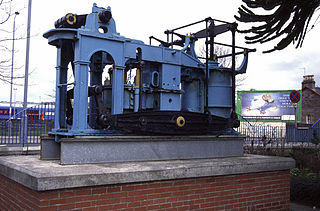
Messrs Robert Napier and Sons was a famous firm of Clyde shipbuilders and marine engineers at Govan, Glasgow founded by Robert Napier in 1826. It was moved to Govan for more space in 1841. His sons James and John were taken into partnership in 1853.

Elder Park is a public park in the Govan area of Glasgow, Scotland, located a short distance south of the River Clyde, to the east of the Linthouse neighbourhood. It contains Elder Park Library, a boating pond, the original Fairfield farmhouse, and Linthouse Mansion portico.
John Gibb Dunlop (1844–1913) was a Scottish engineer and shipbuilder who ran John Brown Shipbuilders for many years. He is best remembered as the person in charge of the building of the ill-fated RMS Lusitania and the renowned RMS Aquitania.

John Honeyman was a Scottish architect. He designed several notable buildings in Scotland, mostly churches, and worked alongside Charles Rennie Mackintosh as a partner for several years.
